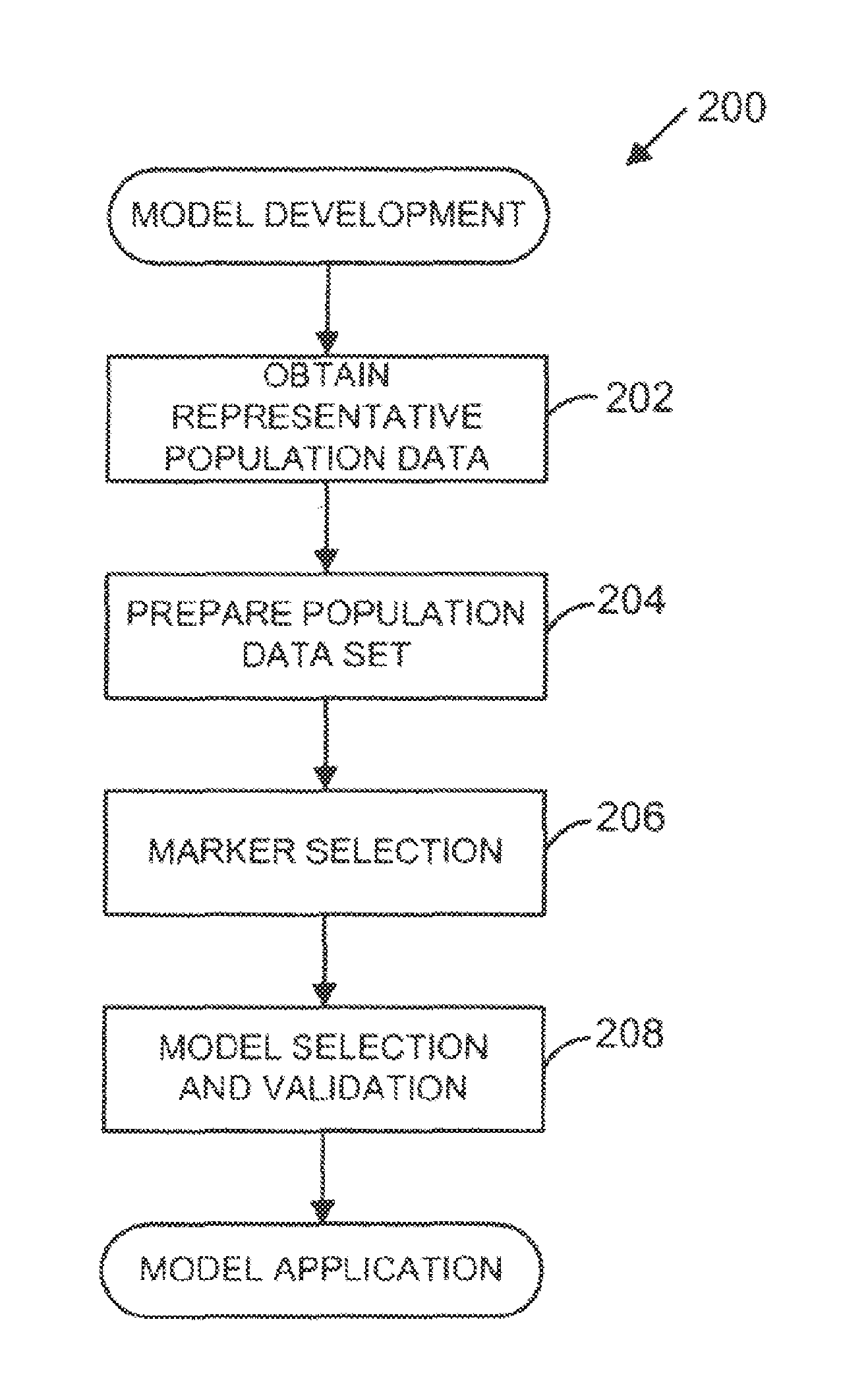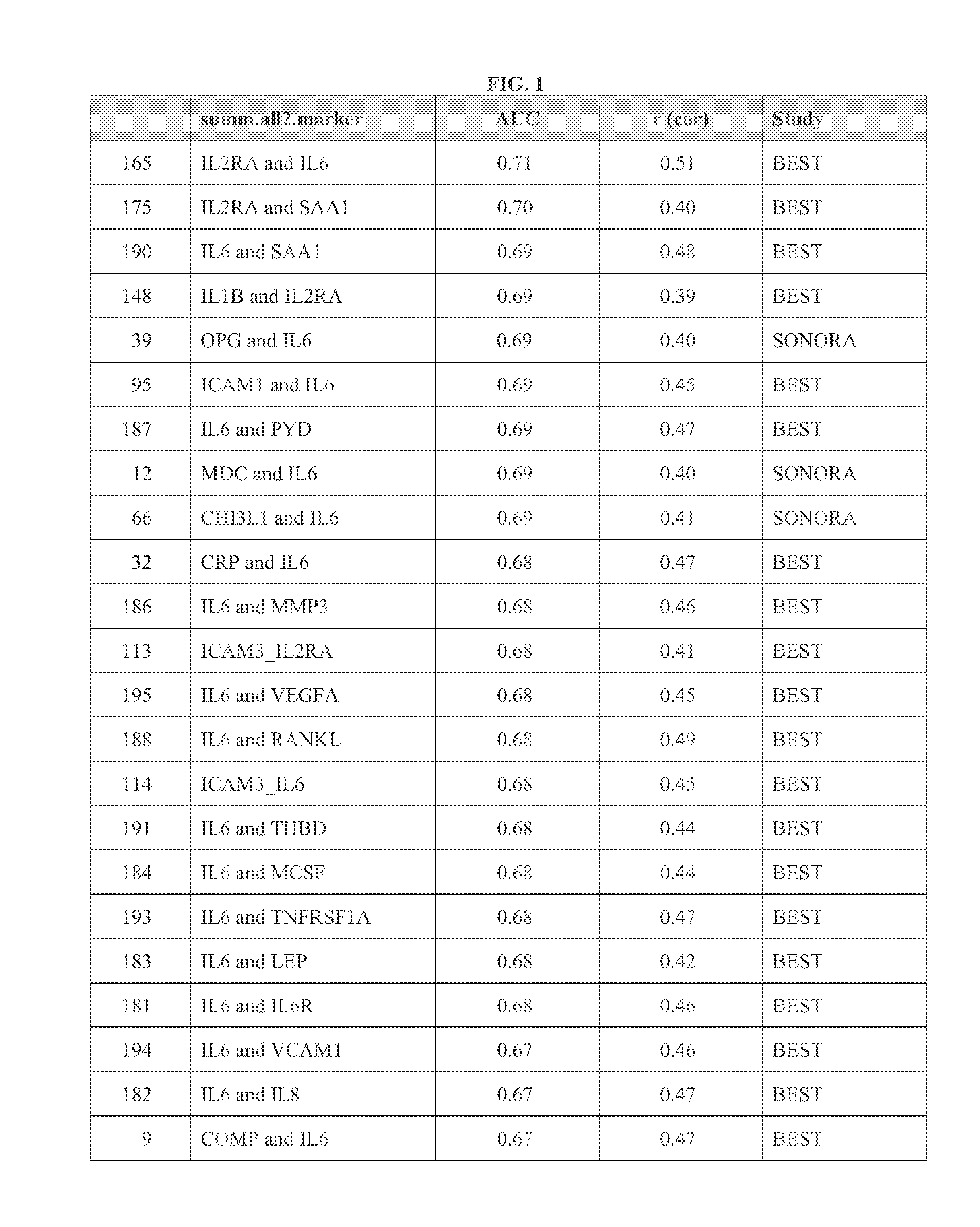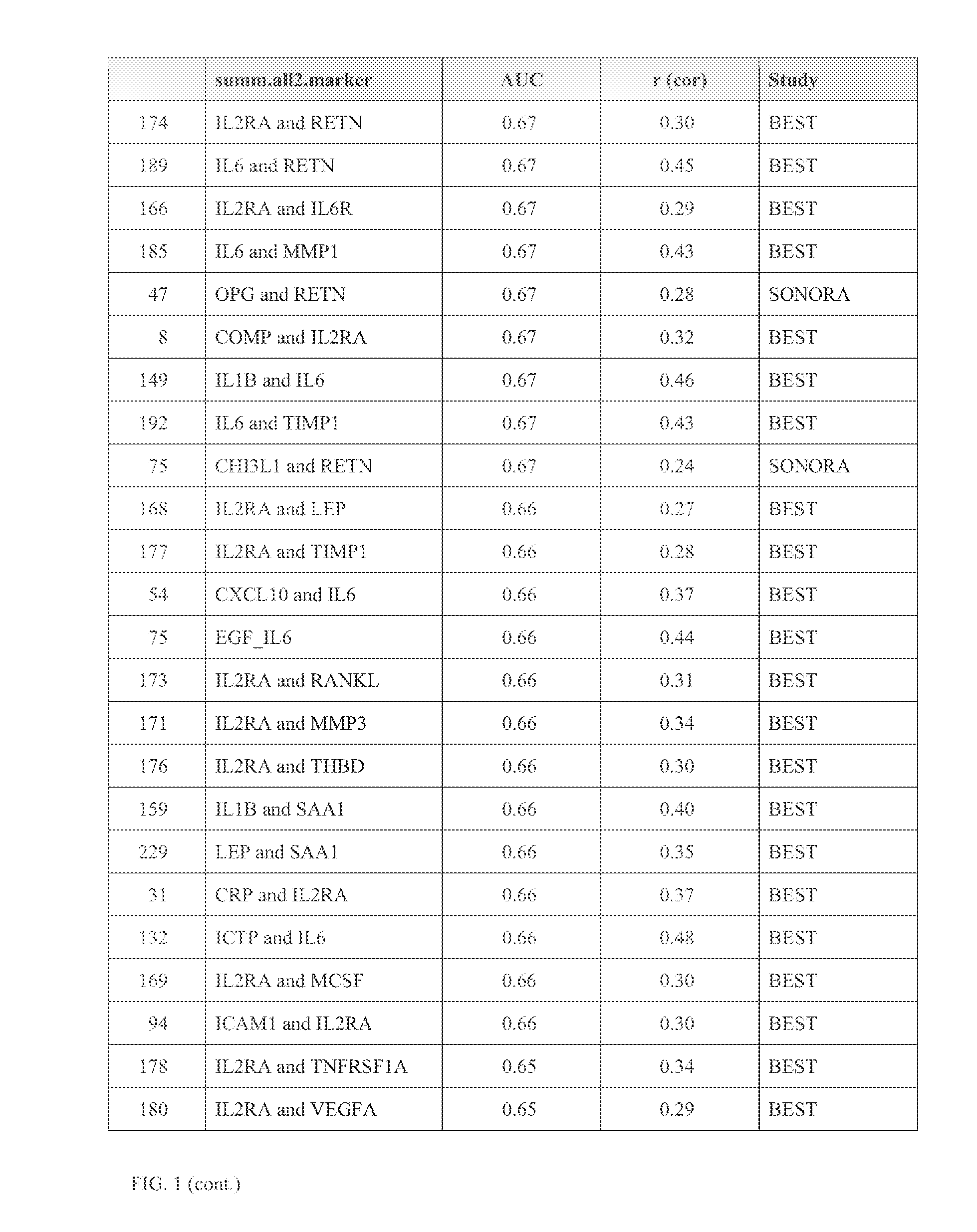Biomarkers For Predicting Progressive Joint Damage
a biomarker and joint technology, applied in the field of biomarkers for predicting progressive joint damage, can solve the problems of joint damage, joint function and subject disability loss, complex disease pathogenesis,
- Summary
- Abstract
- Description
- Claims
- Application Information
AI Technical Summary
Benefits of technology
Problems solved by technology
Method used
Image
Examples
example 1
[0227]Example 1 demonstrates the use of multivariate modeling to transform observed serum biomarker levels into an SDI score useful in predicting the rate of change in total Sharp score (TSS, which is synonymous with and may also be referred to throughout as mSS), and thus predicting radiographic progression in the RA subject. Certain embodiments of the present teachings comprise utilizing the SDMRK set of biomarkers to determine an SDI score that can be used to estimate rates of progression of inflammatory disease and, specifically, predict joint damage in the RA subject.
[0228]Biomarkers were analyzed in samples from 24 subjects with early aggressive RA who participated in a two-year blinded study comparing MTX+infliximab treatment with MTX alone. Subjects were evaluated by ultrasound (US) power Doppler at 0, 18, 54 and 110 weeks, and scored for synovial thickening (ST) and vascularity by power Doppler area (PDA). Joint damage was assessed by radiographic examination and determinat...
example 2
[0264]Example 2 demonstrates that biomarkers used according to the methods of the present teachings correlate with MRI measurements of joint inflammation and damage.
[0265]In this Example, samples were analyzed from 36 pairs of patient visits with serial MRI scans, scored using the RAMRIS method by Synarc. Approximately 60 samples were completely processed and analyzed. The serum levels obtained from 118 biomarker assays were analyzed in these samples. Biomarker concentrations were used to predict absolute MRI scores (erosion, synovitis, osteitis, and joint space narrowing) as well as rate of change of erosion and joint space narrowing.
Methods
[0266]Assays were designed, in multiplex or ELISA format, for measuring multiple disease-related protein biomarkers. These assays were identified through a screening and optimization process, prior to assaying the samples. All markers were analyzed by one of three platforms: ELISA, MSD®, or LUMINEX®. The respective assays, vendors, and platforms...
example 3
[0274]Example 3 demonstrates the identification of biomarkers correlated with change in total Sharp score, and the use of the present teachings in differentiating between RA subjects that are and are not experiencing joint erosion (“eroders” and “non-eroders,” respectively).
[0275]For this Example, samples were obtained from 249 RA subjects with X-ray data. The duration of RA for all subjects at time of sampling was from two to ten years. All subjects were on DMARD therapy (not biologics). Subjects were categorized as eroders vs. non-eroders, 125 of each, as identified by standard qualitative radiologist X-ray reads. Candidate biomarkers were analyzed as in Example 2 by implementing SAM. Markers were identified that differed in concentration between eroders and non-eroders, based on cross-sectional X-rays, using SAM (see Example 2). Only samples less than four years old were used, because serum protein concentrations were found to decrease as the amount of time samples were stored at...
PUM
| Property | Measurement | Unit |
|---|---|---|
| Current | aaaaa | aaaaa |
| Volume | aaaaa | aaaaa |
| Volume | aaaaa | aaaaa |
Abstract
Description
Claims
Application Information
 Login to View More
Login to View More - R&D
- Intellectual Property
- Life Sciences
- Materials
- Tech Scout
- Unparalleled Data Quality
- Higher Quality Content
- 60% Fewer Hallucinations
Browse by: Latest US Patents, China's latest patents, Technical Efficacy Thesaurus, Application Domain, Technology Topic, Popular Technical Reports.
© 2025 PatSnap. All rights reserved.Legal|Privacy policy|Modern Slavery Act Transparency Statement|Sitemap|About US| Contact US: help@patsnap.com



